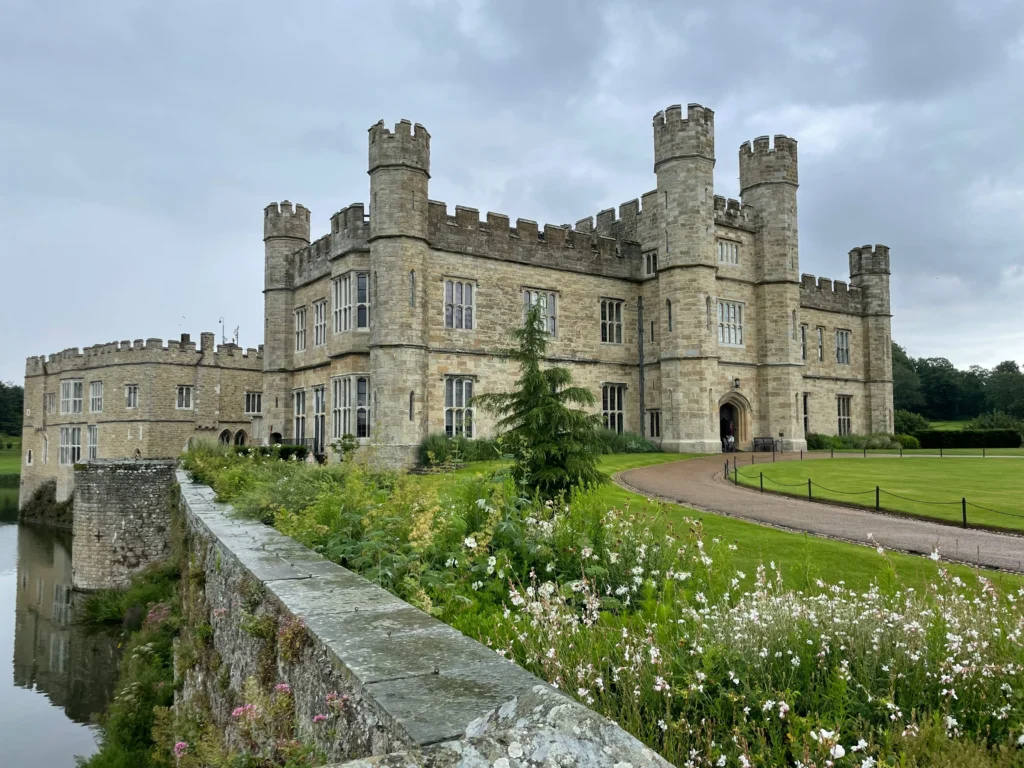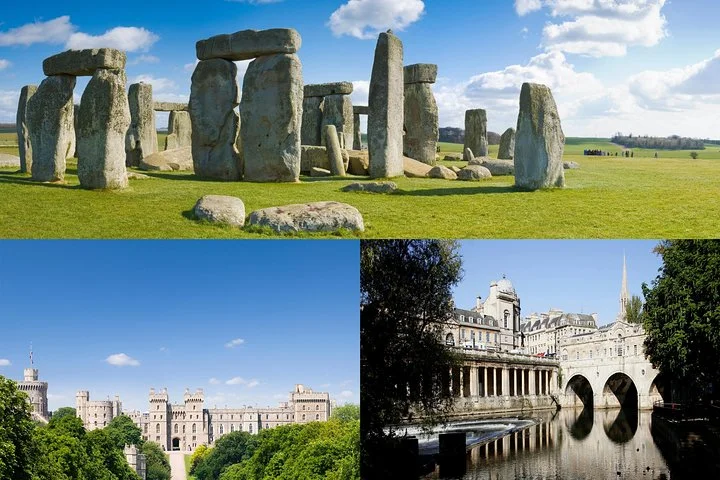Stonehenge – Day Tour – 6 Hours (Luxury Tours)
Proceed Booking
Don't have an account? Create one.
Or Continue As Guest
Continue As GuestAdding item to wishlist requires an account
Don't have an account? Create one.
Search For Your Perfect Tour
Browse Our Tours
Recent Posts
- Eastbourne to/from London: Perfect Travel Guide
- Guildford to/from London: Your Ultimate Travel Guide
- Kingston Upon Hull to/from London: Perfect Travel Guide
- Leeds to/from London: A Simple Guide for Tourists
- Liverpool to/from London – Your Best Travel Guide
- Leicester to/from London – Ultimate Travel Guide
- Luton to/from London – Travel Guide for a Stress-Free Journey
- Manchester to/from London – Travel Guide with a Touch of Luxury
- Milton Keynes to/from London – Your Luxury Travel Guide
- Newcastle Upon Tyne to/from London – Best Travel Guide
- Northampton to/from London–Travel Guide with a Touch of Luxury
- Nottingham to/from London: Your Best Travel Guide
- Norwich to/from London: A Complete Travel Guide
- Norwich to/from London: Your Travel Guide
- Oxford to/from London
Thinking about escaping London for half a day? How about a luxury, six‑hour trip to Stonehenge, the iconic prehistoric monument? It’s only a couple of hours’ drive from the capital—but what centuries it spans back in time! This is your guide to the history, the stones, and how you can do it in style using a premium chauffeur service around London.
🕰️ Historical Background: From Timber Posts to Monolithic Mystery
Stonehenge has a story that unfolds over nearly 5,000 years.
Before the Stones
- The earliest activity at the site begins around 9,000 BC, when Mesolithic hunter-gatherers erected three tall tree-trunk posts, possibly as totems or markers.
- Between 8,500 BC and 7,000 BC, the area was relatively open chalk downland, unlike much of southern England, which was dominated by woodland.
First Major Monument (circa 3100–3000 BC)
- Around 3100 BC, Neolithic people dug the first circular ditch and bank (henge), approximately 100 metres across, with two entrances and the famous Aubrey Holes, believed to have held either timber posts or stones. Cremation burials in these holes suggest early ritual use.
- In fact, up to 150 individuals may have been buried in these early phases, making Stonehenge among the largest Neolithic cemeteries in the British Isles.
Stone Circle Emerges (circa 2500 BC)
- Consequently, by approximately 2500 BC, the site had assumed its iconic form: a circle of 30 large sarsen stones surrounding a horseshoe of trilithons, with an inner ring of smaller bluestones. Engineering features, such as mortise-and-tenon wood-style joints, demonstrate extraordinary sophistication.
- The bluestones originated from the Preseli Hills in Wales, approximately 150 miles (240 kilometres) away.
Later Developments (2400–1600 BC)
- Radiocarbon dating suggests that the bluestones were repositioned between 2400 and 2200 BC, possibly even around 2600–2400 BC, during a significant phase of rebuilding.
- Moreover, scholars now believe this reconstruction served as a symbol of unity among distant Neolithic communities, transporting the central ‘Altar Stone’ from as far as northeast Scotland, possibly the Orkney area, in an unprecedented display of cooperation.
- Recently, a scientific study confirmed that ancient people, not glaciers, hauled the huge stones using human muscles, sledges, ropes, and wooden trackways—highlighting astonishing prehistoric engineering.
Once a Burial Ground, Perhaps a Healing Centre
- Human remains and cremations continued around the site into 1600 BC, indicating ongoing ritual or funerary importance.
- Excavations around Blick Mead, nearby (dating from 7900 BC to 4050 BC), illustrate long-term occupation and possibly the spiritual significance of the landscape.
- Some evidence suggests Stonehenge may have functioned as an early healing or pilgrimage destination, where travellers sought remedies—burials show trauma and deformity, hinting at ritual healing.
Myths, Legends, and Modern Research
- Medieval legend credited Merlin with magically transporting the stones from Ireland. Other fanciful ideas claimed Romans built it—none of which hold up to modern archaeology.
- In the 17th and 18th centuries, antiquarians such as John Aubrey and William Stukeley popularized the idea of Druids and solstice alignments. Stukeley’s surveys showed astronomical placements.
- Modern archaeology—from excavations in the 1900s to the Stonehenge Riverside Project (2003 onwards)—has employed radiocarbon dating, isotope analysis, and ground-penetrating radar to refine the timeline, confirm burial practices, and trace the origins of stones.
🧩 Fascinating Facts & Tips for Visitors
- Stonehenge was constructed in six stages throughout more than a millennium, from approximately 3000 to around 1600 BC.
- Its name likely comes from Old English “stan‑hengen”—”stone hanging” or gallows, referring to the lintelled stone structures.
- Alignment with solar events: summer & winter solstices are precisely marked by the Heel Stone and entrance axis.
- Stonehenge is part of a UNESCO World Heritage Site, along with Avebury and many other prehistoric monuments across Wiltshire. There are over 700 archaeological features in the designated area.
- The site features both sarsen stones (local sandstone) and bluestones (imported dolerite and rhyolite) from Wales and possibly Scotland.
- Legends aside, the stones were moved by human effort, not glaciers—recent studies confirm this.
🚗 Why a 6‑Hour Luxury Day Tour from London Is the Way to Go
Stonehenge lies approximately 90–100 miles (150–160 km) southwest of London, requiring a journey of roughly 2 hours by road, depending on traffic. A well‑paced 6‑hour luxury tour includes:
- Pick‑up and drop‑off anywhere in London
- Comfortable, private travel without the fuss of public transport
- On‑site exploration time, usually 1 hour or more at the stones and visitor centre
- Time to enjoy the countryside scenery en route
🌟 Chauffeur Service: The London Luxury Advantage
Say goodbye to train crowds, schedule worries, and confusing interchanges. Instead, travel in style using Chauffeurz Premium Services right from your London base.
Why choose this kind of premium chauffeur option?
- Door-to-door pick-up from your hotel or flat in London—no fuss, no Uber ping fights.
- Relaxing journey in plush vehicles: leather seats, climate control, bottled water, and privacy.
- No timetables to worry about. Your chauffeur handles local traffic and roads.
- Local knowledge: chauffeurs often know shortcuts and can share fun tidbits.
- Exclusivity: you and your group, no noise, no line-ups—just luxury.
🗺 Suggested 6‑Hour Luxury Itinerary (with Chauffeurz)
London Departure
⏰ 8:00 AM – Your chauffeur from Chauffeurz Premium Services arrives at your central London hotel.
Road Trip & Mini History Chat
🚗 Typically, it’s approximately a two-hour drive to Salisbury Plain. Along the way, your chauffeur shares quirky facts about Stonehenge: how early Neolithic people dug the Aubrey Holes, how the sarsens and bluestones were hauled hundreds of miles, and how the site aligns with the sun.
Visitor Centre & Exhibition Time
🏛️ Spend around 45 minutes at the Stonehenge Visitor Centre. Explore multimedia displays, archaeological artefacts, and reconstruction models.
Stroll Around the Stones
🪨 60 minutes at the stone circle proper. Walk the perimeter, use the audio guide, photograph the stones, and immerse yourself in 4,000+ years of mystery.
Return to London
🚗 Drive back around 1:00 PM. You’re dropped off at your hotel by ~3:00 PM, refreshed and enriched.
✅ Extreme Useful Visitor Tips
- Book tickets in advance to avoid disappointment during peak hours (especially in summer) and reduce waiting times.
- Layer up: The Plain is exposed. Even in summer, the wind can surprise.
- Wear comfy shoes: The visitor centre and circle involve walking across grass and paths.
- Take snacks or water: Chauffeur vehicles may be stocked, but a light bite helps.
- Check solstice times: If you’re lucky enough to visit around June 21 or December 21, you’ll witness incredible alignments.
📌 Quick Recap of Benefits – and Why Chauffeurz Is Perfect
- Fast, door-to-door luxury service from London to Stonehenge and back.
- Travel on your schedule—no waiting for trains or buses.
- Guided commentary and local tips from Chauffeurz.London drivers.
- Smooth transitions from hotel, to car, to visitor centre, to stones—and back to London, stress-free.
- Leave the heavy lifting (of the massive stones) to the ancient builders—you just sit back in plush comfort.
📊 Bullet‑Point Summary
- Stonehenge evolved in six stages from approximately 3000 to 1600 BC.
- The earliest features date back to 3100 BC, with cremation burials in the Aubrey Holes.
- The iconic stone circle was built around 2500 BC, using sarsens and bluestones.
- Stones transported from across Britain—Preseli Hills (Wales) and possibly Orkney (Scotland).
- New research shows human effort—not glaciation—moved stones hundreds of miles.
- Built as a ritual, astronomical, political, and possibly a healing centre.
- Part of a large UNESCO World Heritage landscape in Wiltshire, featuring over 700 ancient features.
- Modern exploration and interpretations continue to reveal new layers.
- Private chauffeur travel from London offers comfort, local insight, convenience, and exclusivity.
✔️ Final Thoughts
Stonehenge is much more than a ring of stones—it’s a story etched across millennia, from hunter‑gatherer posts to Neolithic engineering feats, from burial grounds to solstice markers, from legends of Merlin to modern archaeological breakthroughs.
So, planning your trip yet? Need help booking a chauffeur, sorting out timings, or choosing the best months to travel? I’d be happy to help you plan the perfect luxury day tour to Stonehenge from London.









